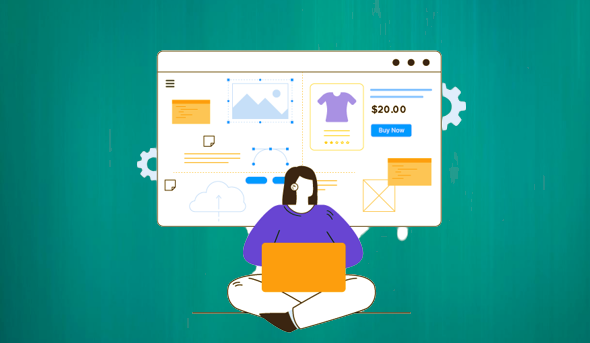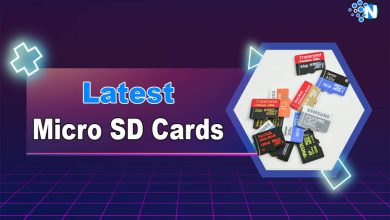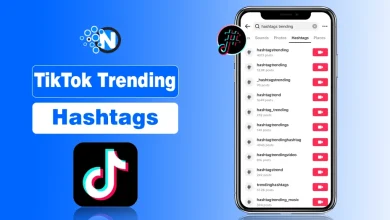Headless eCommerce- Everything You Need to Know

Headless eCommerce allows businesses to use different channels and systems to power their online stores. If you’re looking for an eCommerce platform that gives you more control and flexibility, then you should consider an eCommerce solution. Here, we will discuss what eCommerce is, the benefits of using it, and how to get started. We’ll also provide some helpful resources for those who want to learn more.
Headless eCommerce
Headless eCommerce is an architectural approach that separates the front-end and backend of an eCommerce platform. It makes the back-end headless while allowing both layers to operate independently via an API. The front-end (or client-side) is responsible for displaying products and managing customer interactions, while the back-end (or server-side) handles tasks such as inventory management and order processing. With headless commerce, the two components are separated, allowing businesses to build a custom front-end using any programming language or framework, and pair it with any back-end solution. This approach provides greater flexibility and scalability than traditional eCommerce setups and opens up new possibilities for how businesses can interact with their customers. For example, businesses can use this eCommerce to build innovative applications that go beyond simply displaying products and processing orders. Businesses can focus on creating unique customer experiences that drive long-term loyalty and growth.
Headless eCommerce Features:
API First Approach:
With an API-first strategy, the creation and implementation of the Application Programming Interface (API) take precedence. This is not the same as the standard method, which is based on code. In the code-first strategy, any alteration requires a lot of retesting and redeployment, which is not the case when using an API. Headless eCommerce provides a decoupled approach that can help you create a better customer experience.
Better UX and Personalization:

Headless eCommerce provides the ability to create better user experiences and personalization. The decoupled approach allows businesses to use any programming language or framework to build their front-end. This gives businesses the flexibility to create experiences that are tailored to their specific customers and business needs. It also provides the ability to easily integrate with third-party applications and services, which can further enhance the customer experience.
Improved Performance and Scalability:
Headless eCommerce can improve performance and scalability by allowing businesses to use different back-end solutions for different purposes. For example, businesses can use a separate back-end solution for processing orders and another for managing inventory. This approach can help businesses optimize their eCommerce platforms for specific tasks, which can lead to improved performance and scalability.
New Technologies and Integrations:
Headless eCommerce provides the ability to easily integrate with new technologies and services. With a headless approach, businesses can use any programming language or framework to build their front-end. This gives businesses the flexibility to quickly adopt new technologies and integrations as they become available.
Create Fast Websites:
It provides the ability to create fast websites. This is because there is no need to render the entire page on the server-side before sending it to the client. Instead, only the necessary data is sent to the client, resulting in a faster website.
How Does Headless eCommerce Work:
This is a term that refers to the decoupling of the front-end and back-end of an eCommerce website. The front-end is what the customer sees and interacts with (the “head”), while the back-end manages all of the behind-the-scenes functions, such as inventory management, order processing, and customer data.
A headless eCommerce system, like a headless CMS, works by forwarding requests between the presentation and application layers via web services or API operations. The program layer sends another API request to the application layer in order to inform the customer of the status of their purchase.
Read More:
- 7 Best Ecommerce CRM Software in 2022
- Advantages of Choosing Prestashop for your eCommerce Store
- Proven eCommerce Website Security Tips For 2022
Difference Between handless eCommerce and the Traditional eCommerce
The difference between the traditional and handless eCommerce is explained in the below-given chart:
| Headless eCommerce | Traditional commerce |
| No constraints in design | Faces a number of constraints in design |
| Customizable Experience for admins and users | Already Customized experience for admins and users |
| No maximum time consumption | Great Time Consumption for any minor editing |
| API Approach | No API Upgrading |
| Adopt Multiple User Experience Approaches | Least User Friendly |
Advantages of the Headless eCommerce
- The advantage of a headless eCommerce approach is that it allows businesses more flexibility in how they design and develop their website. For example, they can use different technologies for the front-end and back-end, or even change the front-end without affecting the back-end. This can be especially helpful for businesses that want to experiment with different user experiences or need to make changes quickly.
- It can also be used to create better customer experiences by decoupling the shopping experience from the rest of the website. This allows businesses to design and develop a shopping experience that is customized for their customers, without being limited by the back-end.
- Lastly,it can be used to create hybrid mobile apps. By using a headless approach, businesses can develop an app that uses the native capabilities of the device, such as the camera or GPS, while still being able to take advantage of the back-end features of their website.
Best Headless eCommerce Platforms:
There are various Headless eCommerce platforms available in the market. Some of them are listed below:
BigCommerce:
BigCommerce is an eCommerce platform that provides businesses with the flexibility and control they need to build scalable, high-performing online stores. It is a fully- hosted solution, which means businesses don’t need to worry about managing server infrastructure or security.
Shopify:
Shopify is an eCommerce platform that enables businesses to create online stores. Shopify offers small and medium-sized enterprises the tools and resources they need to develop and maintain their online stores. Shopify is a hosted solution, so companies don’t have to worry about server infrastructure or security.
WooCommerce:
WooCommerce is a Headless eCommerce platform that enables businesses to create online stores. It provides businesses with the tools and resources they need to create and manage their online stores. It is a self-hosted solution, which means businesses need to worry about managing server infrastructure and security.
Final Conclusion:
Headless eCommerce is the future of online shopping. It provides a better user experience and helps businesses to stay ahead of the competition. These platforms are easy to use and offer a wide range of features. If you are looking for an eCommerce platform that can help you grow your business, then it is the way to go.




